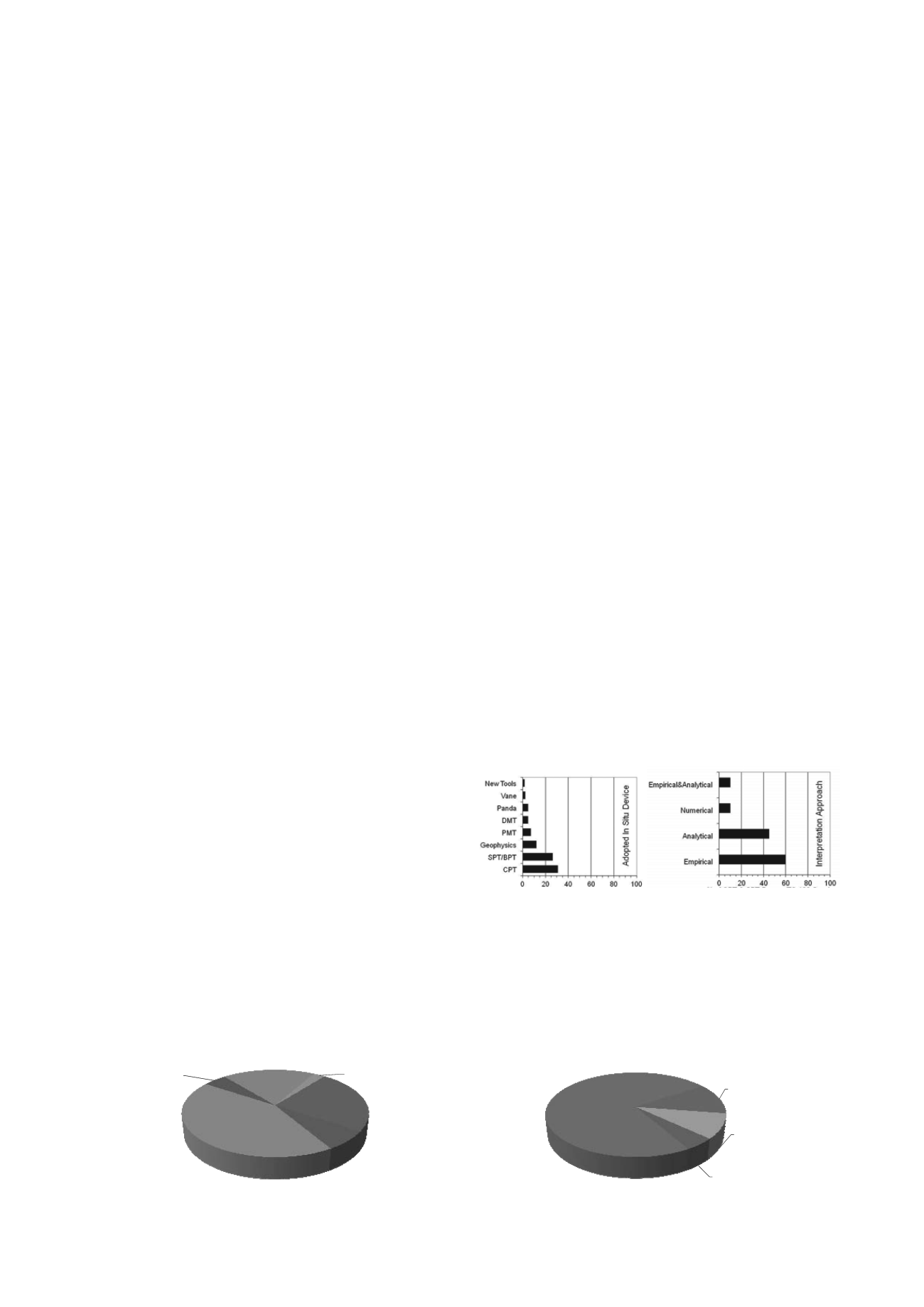
471
Proceedings of the 18
th
International Conference on Soil Mechanics and Geotechnical Engineering, Paris 2013
1
General Report for TC102
In-Situ Testing
Rapport général du TC102
Essais in-situ
Giacheti H.L.
São Paulo State University, Dept. of Civil and Environmental Engineering, Bauru-SP, Brazil
(wwwp.feb.unesp.br/giacheti)
Cunha R.P.
University of Brasília, Dept. of Civil and Environmental Engineering, Brasília-DF, Brazil
(
ABSTRACT: An overview of all the technical papers accepted for the in-situ testing session of the 18
th
ICSMGE is presented. Forty
two papers submitted to this conference were considered as part of this session. The papers were grouped into four major categories:
site characterization, technological advances, geotechnical analyses and behavior, and soil and rocks properties. The objective of this
report is to present an overview of the theme topics and briefly discuss the major contributions achieved by these papers.
RÉSUMÉ : Un aperçu de tous les articles acceptés à la conférence dans la session «Essais in-situ» du 18
e
CIMSG est présenté ici.
Quarante-deux écrits soumis à cette conférence ont été considérés comme faisant partie de cette session. Les documents ont été
regroupés en quatre grandes catégories: la caractérisation du site, les progrès technologiques, les analyses géotechniques, les
comportements et enfin les propriétés des sols et des roches. L'objectif de ce rapport est de présenter une vue d'ensemble de tous les
sujets et de discuter brièvement des contributions majeures apportées par ces documents.
KEYWORDS: In-situ tests, site characterization, technological advances, geotechnical analysis and behavior, soil and rock properties.
1 INTRODUCTION
Site characterization is the first step on all geotechnical projects
and the objectives generally relate to the definition of the
stratigraphic profile and groundwater level, estimation of the
geotechnical properties from each soil unit, identification of
critical layers, definition of geotechnical design parameters and
indication of required, if necessary, additional laboratory tests.
The traditional methods for site characterization rely
basically on drilling, sampling and laboratory tests. These are
usually time consuming and, in some cases, over budget. The
“modern” approach, on the other hand, focuses on the rational
use of in-situ penetration tools coupled in some cases with
geophysical techniques. Of course, the success of an efficient
site characterization program depends on clearly defining the
scope or objectives of the enterprise and, in some cases,
combined site investigation techniques are adopted – as will be
demonstrated through the papers of this session.
Hence, TC102 sessions of the conference contain papers
with distinct investigative approaches and scopes. Some have
presented new testing devices; others new characterization or
interpretation methods. Some have described real case studies
where the site characterization was a major issue, whereas
others discussed the interpreted soil and rock properties to be
used as input for routine geotechnical analyses.
Most of the contributions deal purely with in-situ
investigation tools, but many have mixed it with laboratory or
numerical investigation techniques. As presented in Figure 1,
the majority of the papers are “European’ in essence, which is
expected for the 18
th
ICSMGE held in this continent.
Asia
Africa
Europe
South
America
North
America
Australia
Figure 1. Paper distribution by continents for this conference session.
Figure 2.a shows the distribution of all papers in this session
that used any particular in-situ testing technique as a major site
investigation tool. Notice that most of the papers used more
than one technique. From this, it is possible to realize that CPT
and SPT were the more widely-employed tools amongst the
published papers. Figure 2.b depicts, from the universe of
papers that solely adopted CPT or SPT (or both) as site tool,
which interpretation techniques were adopted. It is clearly
evident that empirical approaches still form the dominant
interpretation group, although in many papers it has been used
together with other complementary methods.
a) b)
Figure 2. a) Percentage of all papers in the session that used the listed
in-situ technique among others site investigation tools and b) Percentage
of (only) CPT and/or SPT papers in the session that adopted the listed
approach to interpret the data, among other techniques.
Figure 3 shows the types of geotechnical formations that
served as the major soil stratum for the employed investigative
techniques. It is clear that the great majority of the presented
papers are concerned with sedimentary deposits, whereas few of
them focused on “less classical” materials such as residual
(tropical) soils or man-placed tailings and compacted earth fills.
Sedimentary
Residual/
Tropical
Earth Fill/
Tailing
Other
Figure 3. Percentage of geomaterial types addressed in this section.


